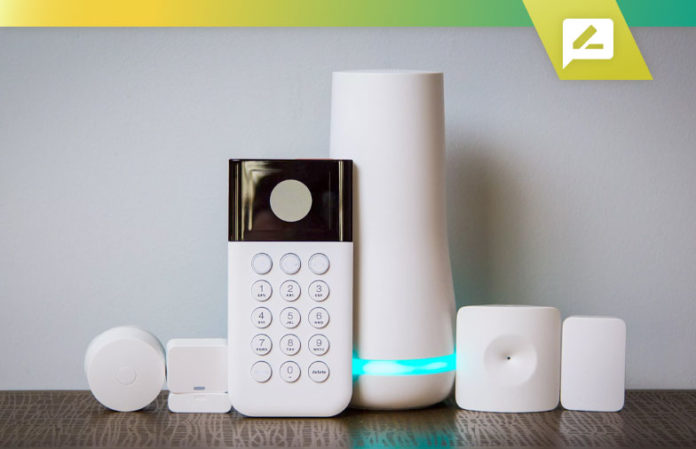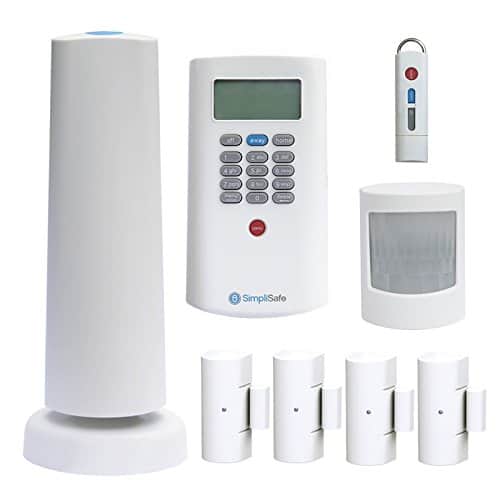Table of Content
And you'll only have to replace its batteries ever 3,000 or 4,000 times it lights up. With the affordable, reliable, and easy to use home security devices on the list we've compiled, your residence will be more resistant to forced entry and better ready to sound the alert should a break-in occur. Best of all, none of them require professional installation, nor will they markedly alter the home in any way. An upgrade to the previously mentioned intruder alarm system is this wireless Arduino-based motion detector.

Only you know what kind of security and home automation features you need for your home. Traditional home security companies will send someone to install your system and try to upsell you on a bunch of products you don’t even need. They can be configured to fit specific needs, as well as the option to add additional components. These DIY home security systems not only help protect lives and property, but also satisfy every need and budget. You won’t have to worry about paying someone else to do it for you because when it comes to these security systems that are reviewed below, you’ll have no problem taking a little bit of time out of your day to set these up.
Smart Thermostats
Sign up for Verge Deals to get deals on products we've tested sent to your inbox daily. But whichever system you pick, what matters most, in the end, is the peace of mind that comes from knowing you and your family are safe from anyone entering your house without your permission. You can install this system on your bedroom door, so your sibling won't be able to sneak up on you again. It's also great for securing the precious collectibles on your display shelf. To prevent any harmful effects, just remember not to place the laser beam anywhere where it might shine into someone’s eyes.
We found the process to be pretty easy, but it does mean you’ll need an extra app. Although we didn’t test that many devices this time around, we did add an extra Eero 6 Extender by the front door to ensure a strong connection with outdoor cameras. When connected to our home internet, the Eero actually gave us speeds a little better than promised, up to 900 Mbps. Wirecutter’s networking expert, senior staff writer Joel Santo Domingo, said it’s definitely a plus; he also said he’s planning to make the Eero 6 a pick in our mesh-networking guide soon.
Compare DIY home security systems
You should be able to control your smart lock from anywhere in the world, which is a must-have for people who sometimes forget to lock up after they leave the house – or worse, lock themselves out! Advanced locks have Z-Wave Plus technology and include features, such as allowing you to create unique entry codes for friends, family, service providers, etc., through your mobile app. The system will store up to 24 hours of footage for your later perusal, and it even offers a 30-second "Day Brief" that shows all the highlights, if you will, from a day of monitoring. This half-minute briefing video includes clips recorded based on motion detection and based on any customized alerts you have programmed, such as a person detection feature. In addition to monitoring your home’s activity with door sensors and motion detection, many home security systems also support cameras, either inside or outside your home. This is a nice feature to have if you want to build a complete security system, but cameras aren’t necessary if you just want to secure your home from intruders or monitor for emergencies.
While the mobile app is easy to use, it took a while for Wyze to allow multiple users like with Wyze cameras—other family members needed the physical keypad to arm and disarm the system. Wyze Home Monitoring redefines budget security systems almost as much as its cameras did for budget security cameras. This DIY system has the most affordable monitoring in the industry at just $9.99 a month and even sells equipment for next to nothing. If you buy directly from Wyze, the Wyze Sense Hub costs around $30 up-front with a monthly subscription . Features like 24/7 monitoring, automated system checks, indoor and outdoor security cameras, and unique user codes come standard for all the equipment plans. All SimpliSafe plans give you mobile app access to your system so you can keep an eye on it from your phone.
Home Security Cameras
It’s easy to set up and use, can be customized with a large selection of compatible add-ons, and features an optional, affordable monitoring plan ($20 per month or $200 per year). The Ring Alarm Pro doesn’t have the ability to integrate with as many third-party smart-home devices as our other picks, but it does have a built-in Eero Wi-Fi 6 router . This means the base station can both serve as the brains of your security system and replace your current Wi-Fi router (it can be set up as a mesh Wi-Fi network, too, which may improve your Wi-Fi’s range and performance). The Eero router also provides backup internet access via a cellular connection , should you have a power or internet outage.

The Ring Alarm Pro base station is also the company’s first to incorporate the features of the Ring Smart Lighting Bridge, a tiny box that can wirelessly connect Ring lights to your home network. After the initial high expense of purchasing equipment, Scout offers two month-to-month subscription plans depending on whether you opt for self or professional monitoring. ($40.99, all of the Gold features with added HD video monitoring) plans. Customers get the choice of 12, 24, and 36 month contracts, or a pay-as-you-go option. While you can receive a full refund within 30-days, if you cancel any time after, you must pay 75% of your remaining contractual balance. For dogs over 40 pounds, you can replace the motion sensor with a glass break sensor or security camera.
A DIY home security system will give you peace of mind from knowing that someone is handling any burglaries or other crimes on your property round the clock. In addition, many of these homemade home security systems can also be monitored and controlled directly from you. All in all, some DIY systems work really well for those living remotely outside of city limits where quick response times from authorities might. This system is used with the included control panel console or handheld remote transmitter to arm and disarm the alarm system. This DIY wireless security system comes with no monthly fees, no contracts as well as being self-monitored and self-controlled with a free app on your smartphone. Not only will you have remote control and monitoring capabilities but you can use the 2 way voice communication function if needed.

Most DIY brands allow you to build your own alarm system or add items to existing kits. Here's a glance at the self-install security system kits available from our top picks. Frontpoint’s mobile app has an incredible number of features that make it the superior choice for smart home equipment. You can view live camera feeds, access stored footage, program schedules for heating, cooling, lighting, security and more. The Cove mobile app allows you to turn your alarm on and off, but that’s about it. Every modern smart security system should have a mobile app, but some have only minimal features.
Still, only the best security systems have sensors that contact you right away and then notify local emergency responders for you. A smart security system should include home automation – this is what truly makes your life easier and saves you money on gas and electricity bills. With this technology, you can schedule everything from temperature levels, lighting and more. The best DIY home security systems are already pre-configured, so it’s effortless to set yourself up and everything works right out of the box.
There was a time when home security systems were only installed by professionals, but times have changed. Today, installing a security unit can be as simple as plugging in a camera and connecting it to the internet. Homeowners don’t need electrical skills to tap into wiring or tech skills to network devices together.

No comments:
Post a Comment